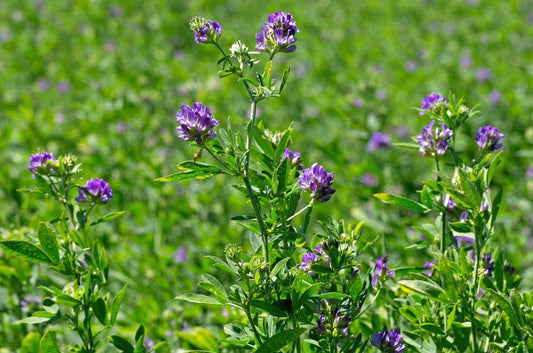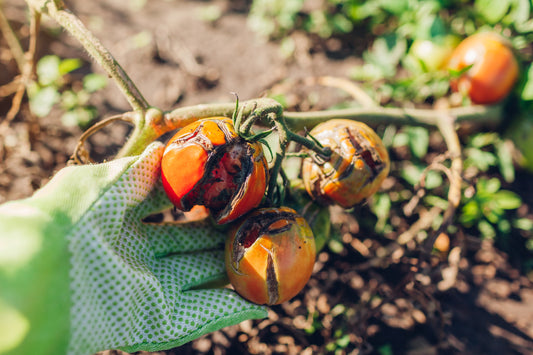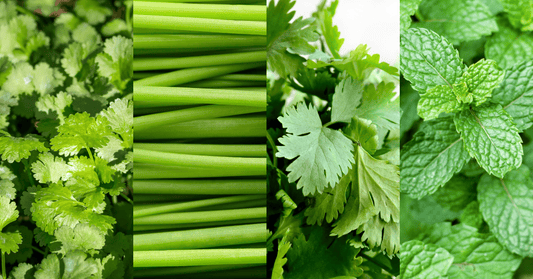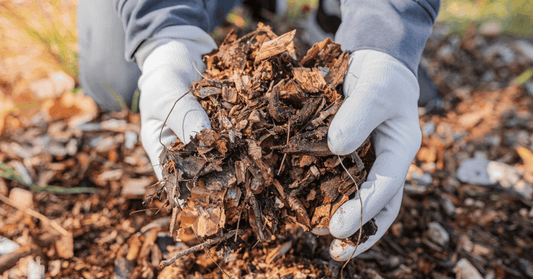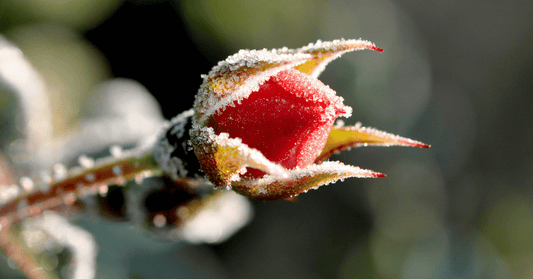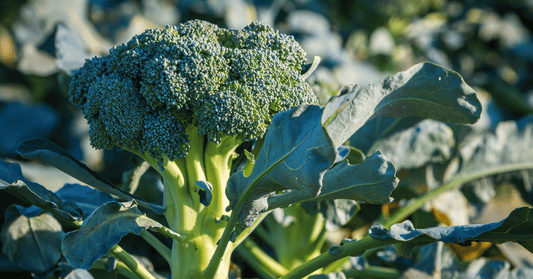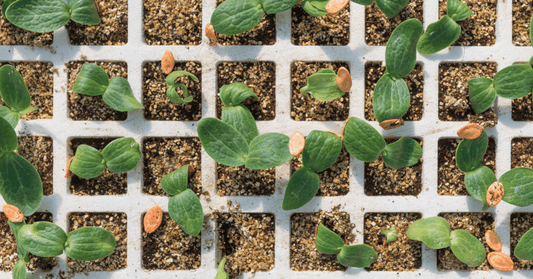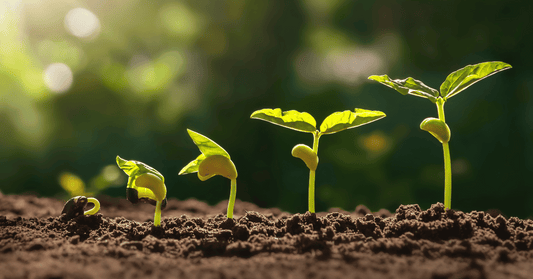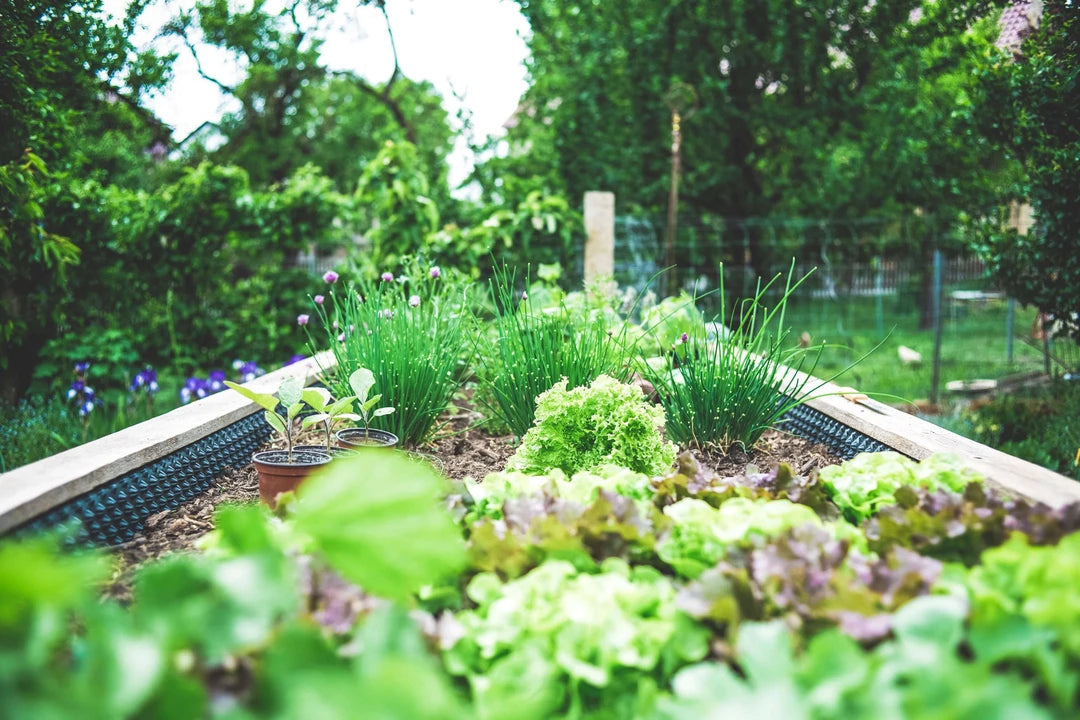
Home Gardening 101: Everything You Need to Know About Starting a Sustainable Backyard Garden
The art of home gardening: you’ve seen it all over social media, and probably on your last neighborhood stroll. This practice continues to cultivate a sense of health and independence for those who have taken to this hobby since the agricultural revolution.
From bursting spring flower gardens to raised beds overflowing with seasonal produce, a home garden is a great hobby to cut costs, get outdoors, and mindfully consume fresh food.
There's a lot to think about when starting your own garden, but don't worry. We’ve put together some home gardening tips and ideas to help you get succeed.
The Benefits of a Home Garden
Organic & Sustainable
For decades, home gardening has been a pastime that allows people to connect with their environment and cultivate a return to consuming fresh, home-grown food.
A home garden is also an opportunity to add life to your landscaping and accent your home with decorative flowers and plants. Growing at home is the perfect way to explore organic gardening and learn how to give your plants the support they need – without the use of harmful pesticides or herbicides.
If you’re looking for ways to minimize your own carbon footprint, home gardening is the perfect opportunity! Sustainable home gardening is much more environmentally friendly than the carbon footprint of commercial agriculture.
The Value of Gardening
While learning to stop relying on a trip to the grocery store for your produce needs is difficult, the satisfaction you get from picking fresh ingredients from your backyard for a new recipe is unparalleled. Gardening is also a great way to create moments for family bonding.
Sowing the seeds, tending to the plants as they grow, and then harvesting the produce when it’s ready is a fun cycle the whole family will take ownership of together. Plus, family meals will become even more meaningful.
Home gardening is a hands-on activity, giving kids the chance to learn about responsibility and experience a sense of accomplishment with tangible results. Showing kids at a young age how to cultivate life and live sustainably are principles that will be instilled in them for the rest of their lives.
Over the years, we've been helping families and farms grow sustainable, organic crops with our TeraGanix home gardening products. Happy, healthy gardening is our goal to provide families and farms with the tools needed to flourish their gardens.
Things to Ask Yourself Before Your Start Home Gardening
Before you start to build out your home garden, planning and gathering your ideas first will help you to achieve your best results. Here are some questions to ask yourself to get started:
- What should I plant? What kind of plants grow best in your climate?
- What are my gardening goals? Growing food, decorative plants, flowers?
- How much does a home garden cost? How much do you want to spend?
- How much space and light do I have available? Tap into the knowledge base at Square Foot Gardening to maximize your yard.
- Do I have the time to commit to tending a garden? Do you have time for weeding, protecting your garden from insects and animals, enough access to water and irrigation, setting up a garden with minimal environmental impact?
It's important to determine the purpose of your garden, as well as what resources you want to allocate toward your garden. Gardens require varying levels of time, money and effort to get up and running, so be honest with yourself about how much you're willing to invest.
Start a Home Garden with These 7 Steps
When you start to think about all the elements of beginning a garden, it can be... overwhelming. We're here to take some of the stress out of the process, with 7 home gardening tips to give you that momentum you need to get started.
Step 1: Decide What You Want to Grow
When planning what to grow in your garden, it's important to take both environmental factors and your personal preferences into account.
Climate is one of the biggest factors in determining how successful your home garden will be. Figure out which plants, herbs, flowers and vegetables you plant will be most successful in the region you live in, and what seasons to plant them in. Don't forget to check the approximate start and end frost dates of your region so that you know how long your growing season will be.
Need help? Look to your local community gardening experts, join online gardening groups and forums, or even do a simple internet search for some extra guidance.
Step 2: Find Sufficient Garden Space
You'll need to decide what size you want your garden to be based on the space you have available. Remember: you can always start small and grow your garden over time as you become more experienced.
Your crops shouldn't live in a cramped space – if your plants and vegetables don't have enough room to grow they won't reach their potential. Make sure the garden beds you create have an adequate amount of space to grow and flourish.
Gardening Tip: If you have limited space on a patio deck or a small outdoor area utilize grow bags, large pots, or containers for convenience. Vertical crops also allow you to grow more vegetables, flowers, and herbs in a tighter space. Plants such as tomatoes, sunflowers, and bamboo will yield the highest volume.
Don't forget to find your sun source when you consider which type of greens you'll plant! Start taking note of how much sunlight your yard gets, and when. This will ensure that your nursery will have an adequate amount of sunlight during its growing season.
Step 3: Test & Form Your Soil
Before you begin your planting journey, be sure to test your soil for nutrient deficiencies. Sufficient growth starts with the soil. Healthy soil means you’ll obtain healthy plants worthy of the time, effort, and money you’ll be putting into your garden. So, pay attention to the level of acidity and the percentage of organic matter in your soil.
When it comes to fertilizing your home garden, organic options are healthier – both for you and the environment. It’s also less risky in keeping the soil fertile and making educated guesses on how much to use.
We recommend trying our Certified-Organic Bokashi Compound. Bokashi breaks down the nutrients in the soil that your plants can’t access on their own. You can add it directly to your soil, or mix it with compost to introduce antioxidants and minerals that will help ensure higher fertility levels for your roots.
Step 4: Choose the Best Seeds or Seedlings for Your Garden
Now that your soil has passed the test, you'll need to decide if you want to start with seeds or seedlings. While seeds are the cheapest and easiest way to start a home garden, they can have a hard time growing if they’re not prepared properly.
Seedlings come in cubes of soil that are already beginning to sprout. They can be planted directly into your soil and usually have a better chance of healthy growth – however they tend to be more expensive than seeds.
If you're confident that they are high-quality and compatible with your environment, seeds are the way to go. However, if you’re dealing with more fragile or finicky crops later in the planting season, seedlings are a far superior option.
Step 5: Plant Your Seeds or Seedlings
Now that you've done all your research and preparation, it’s time to start planting! Your crop should come with instructions on the packaging, but here are some basic planting tips:
- Plant your seeds three times as deep as the seed's diameter.
- Ensure that you are planting seeds in the appropriate climate and time of year.
- Pay attention to the weather, specifically frost dates, to make sure you don’t plant too soon.
Step 6: Nurture & Water Your Home Garden Watering
It's crucial that you don't leave your garden unattended or unwatered for a long period of time – but you should also be sure not to overwater your home garden. During the initial growing period, most crops need around one inch of water per week.
Check your soil to see if it’s too moist or too dry. If it feels hard and crusty, that means it's too dry and needs to be watered more frequently.
If the soil is too mushy and muddy, that means it's too moist and you should cut back. Paying attention to these factors when you begin your watering routine will help you to establish your optimal watering schedule.
If you need help improving the texture and drainage of the soil while promoting growth in your garden, our EM-1® Microbial Inoculant may be right for you.
The EM-1® Microbial Inoculant is the best all-natural, organic probiotic for your plants and soils. It improves drought tolerance, restores a natural balance to healthy soil, and naturally loosens compacted soil.
As EM-1® starts to improve seed germination, root development, nutrient availability, and plant quality – it accelerates the conversion of organic matter into soil humus and increases beneficial microbial activity. Bonus: at the same time, bioremediation bacteria eliminates foul odors in the home (pets, smoke, garbage, drains, paint, etc.) Did we mention that EM-1® is OMRI (Organic Materials Review Institute) listed?
Using EM-1® :
- It can be used right from the bottle.
- Just fill the reservoir of a hose-end sprayer with the EM-1® as you would with any fertilizer, and spray all your plants.
- You can make Activated EM-1® and make your EM-1® bottle go further. To make activated EM-1®, (click here). Then, just fill the reservoir of a hose-end sprayer with the Activated EM•1®, as you would with any fertilizer, and spray all your plants. One hose-end sprayer will treat about 1/8 acre.
- Some hose-end sprayers let you dial in the dilution rates. You can use the rates suggested on our label to set the application rate. We suggest one ounce per gallon (2 TBS) for all plants.
Pests & Weeds
Pests are usually attracted to wilting crops, so be cautious they don’t damage your garden. Avoid wilt by giving your plants the nutrients they need and pay attention to, whether or not pests have infested your garden.
Keep a watchful eye on any weeds, and pull them out if they start surrounding your home garden. Weeds can stunt the growth of your plants, and take vital nutrients away from your produce!
Step 7: Enjoy Your Home Garden
Now it's time to stand back and admire your hard work -- you started your first home garden!
While you wait for your crops to grow, keep educating yourself on when to prune and harvest your produce. Not all plants are the same, even within the same crop, so make sure you’re paying attention to the signs that each plant is exhibiting.
General Seasonal Tips: Each season offers a general rule of thumb to follow for a successful home garden. During the spring season, focus on keeping the weeds out. Summer requires an overabundance of watering, and fall focuses on trimming up and keeping things clean.
Once you’re confident it’s time to harvest, gather your crops and indulge! After all, nothing beats veggies, flowers, and herbs fresh off the vine!
Improve Your Home Garden with Compost
Starting your own compost pile at home is a good way to utilize organic waste from both your kitchen and garden to create fertile soil. Compost helps promote growth and good health in your garden, and is great for the environment!
At TeraGanix, we offer a bokashi compost kit of 2lbs Bokashi and one airtight compost bucket with a sieve and spigot. The Essential Bokashi compost bin combines EM Bokashi and our custom bokashi bucket to create nutrient-rich soil for your garden.
We make it easy – using this kit for food waste recycling or composting will turn your kitchen scraps into nutrient-rich soil, and you'll get to watch your garden thrive.
Each kit includes:
- Airtight Bokashi Organko bin container
- Lid for easy opening
- Spigot on bottom to drain liquid fertilizer produced during fermentation
- One 2lb pouch of EM Bokashi made with certified organic rice bran and EM-1 Microbial Inoculant for faster fermentation.
Use Creative Garden Beds & Containers
Gardening can take up a lot of space, especially if you’re planning to grow crops like pumpkin, squash, and watermelon. Make sure to pay attention to the growth your plants could achieve, and the space you'll need to accommodate them as you decide where you’ll plant them.
If you don’t have enough space to build the garden you want, get creative with garden beds and containers to maximize your growth potential. Here are some home gardening ideas for limited space:
- Hanging Garden Wall: Taking your garden vertical is an easy way to give yourself more space for plants. Pay attention to the drainage and sunlight needs of each plant as you’re choosing how to fill a hanging garden wall.
- Pallet Garden: Using a pallet that has enclosed edges is a quick and easy way to create a few extra rows above ground for your plants.
- Boxed Garden: Repurposing an old crate as a garden bed is a perfect way to make space where there wasn’t any before.
- Raised Beds: In general, raised beds are the perfect solution if you’ve run out of space or don’t have workable soil around your home.
Buy Essential Gardening Tools
There are a few essential tools you'll need to succeed as a new gardener. Whether you're gardening in containers or garden beds, it’s important to have the proper equipment.
If you’ve decided to garden in containers, you’ll need:
- Containers
- Potting soil
- Watering cans
- A small trowel
For gardening in beds, you’ll need:
- Gloves
- Trowel
- Watering can
- Shovel
- Hoe
- Digging fork
- Rototiller (for bigger gardens)
Top 10 Easy-to-Grow Flowers at Home
Growing a flower garden at home? After you treat your soil with our EM-1® Microbial Inoculant, these are the best go-to plants for beginners:
- Marigolds
- Sweet Alyssum
- Sedum
- Catmint
- Sunflowers
- Zinnias
- Impatiens
- Begonias
- Snap Dragons
- Morning Glories
Once your flowers bloom, you can even add EM-1® to the water in a vase of cut flowers to maintain their color and freshness for an extended period of time.
Top 10 Easiest Vegetables to Home Grow
There is nothing better than a fresh salad or pasta loaded with produce, picked right from your own garden. Here are some of the easier veggies to grow at home:
- Lettuce
- Root veggies (carrots, beets, potatoes, radishes)
- Green beans
- Tomatoes
- Cucumbers
- Squash
- Bell peppers
- Spinach/Kale
- Peas
- Onions
Don’t forget to save the excess from your veggie feast to add to your compost bin. This will create a perfect life cycle to conserve your backyard vegetable crops. Composting also helps reduce waste in landfills and gives it a purpose.
At TeraGanix, we know that growing great-tasting, highly nutritious vegetables starts with the soil. We offer several ways to get that healthy soil like creating compost, making bokashi with plant and/or animal manures, and fermented food wastes.
EM Bokashi, a certified-organic bokashi compound that breaks down the nutrients in soil that your plants can’t access on their own, introduces antioxidants and minerals into your soil and compost.
Whether used in composting or directly added to your garden's soil, EM Bokashi replaces chemical fertilizers with a biodynamic, non-GMO alternative that boosts plant health and production.
EM Bokashi can be:
- Added directly to potting soil or garden beds
- Used in composting food waste
- Used to eliminate odor in your cat litter
- EM-1 and Bokashi
EM Bokashi, a certified-organic bokashi compound that breaks down the nutrients in soil that your plants can’t access on their own, introduces antioxidants and minerals into your soil and compost.
Whether used in composting or directly added to your garden's soil, EM Bokashi replaces chemical fertilizers with a biodynamic, non-GMO alternative that boosts plant health and production.
Create Your Home Garden Today
Now that you know everything you need to in order to start a successful home garden, it’s time to get planting. Create a plan, strategize for optimal budget and growing space, properly equip yourself, and tend to your garden as the seasons, sunlight, and soil call for.
We’ve given you the guide to growing your best garden, so don’t forget to pick up our TeraGanix essentials for your home. Our EM-1® Microbial Inoculant and EM Bokashi will help ensure a green thumb all around. There is nothing quite like the rewards that come from a healthy, sustainable home garden!